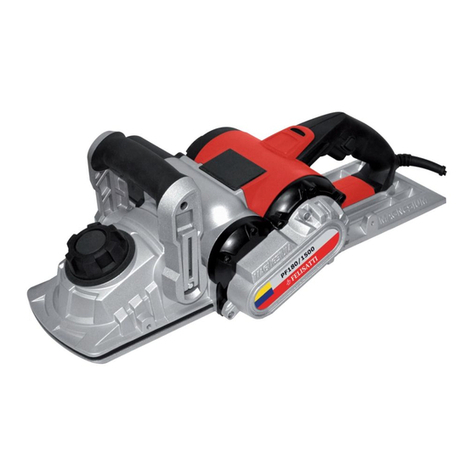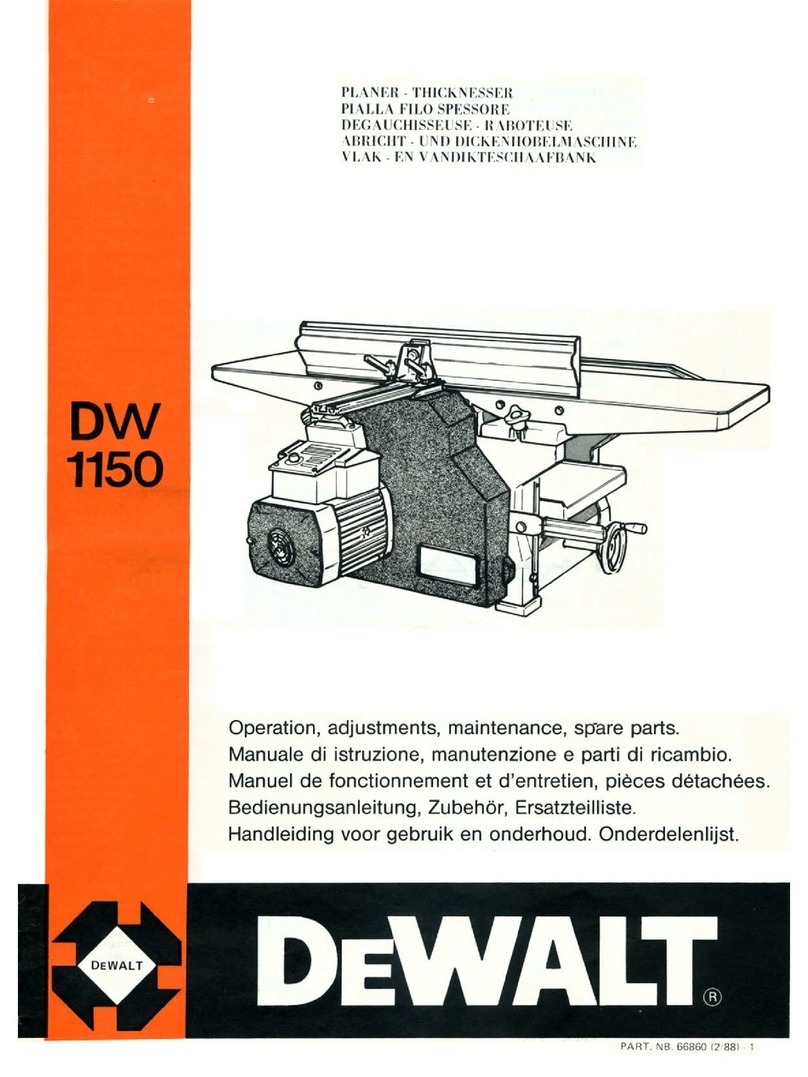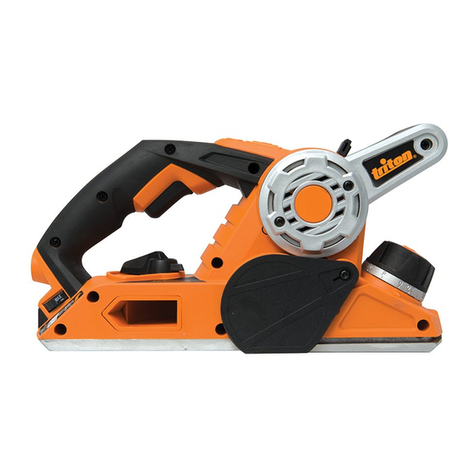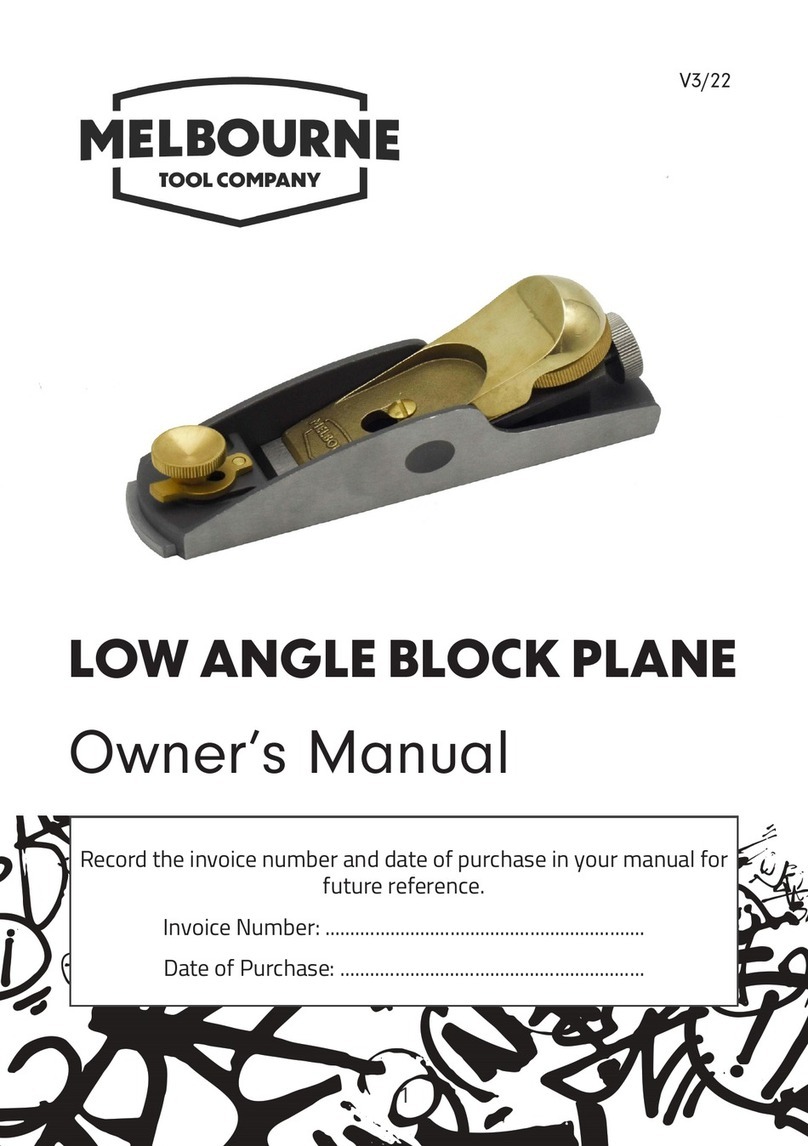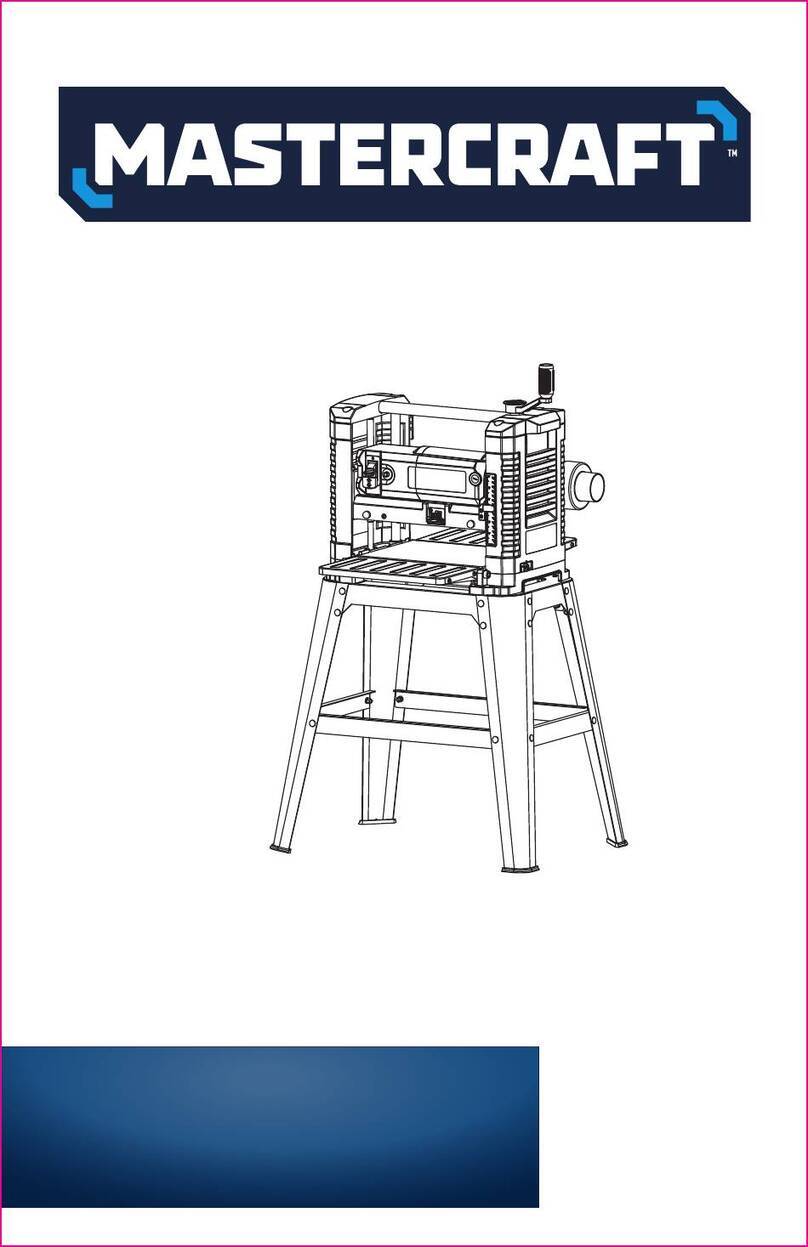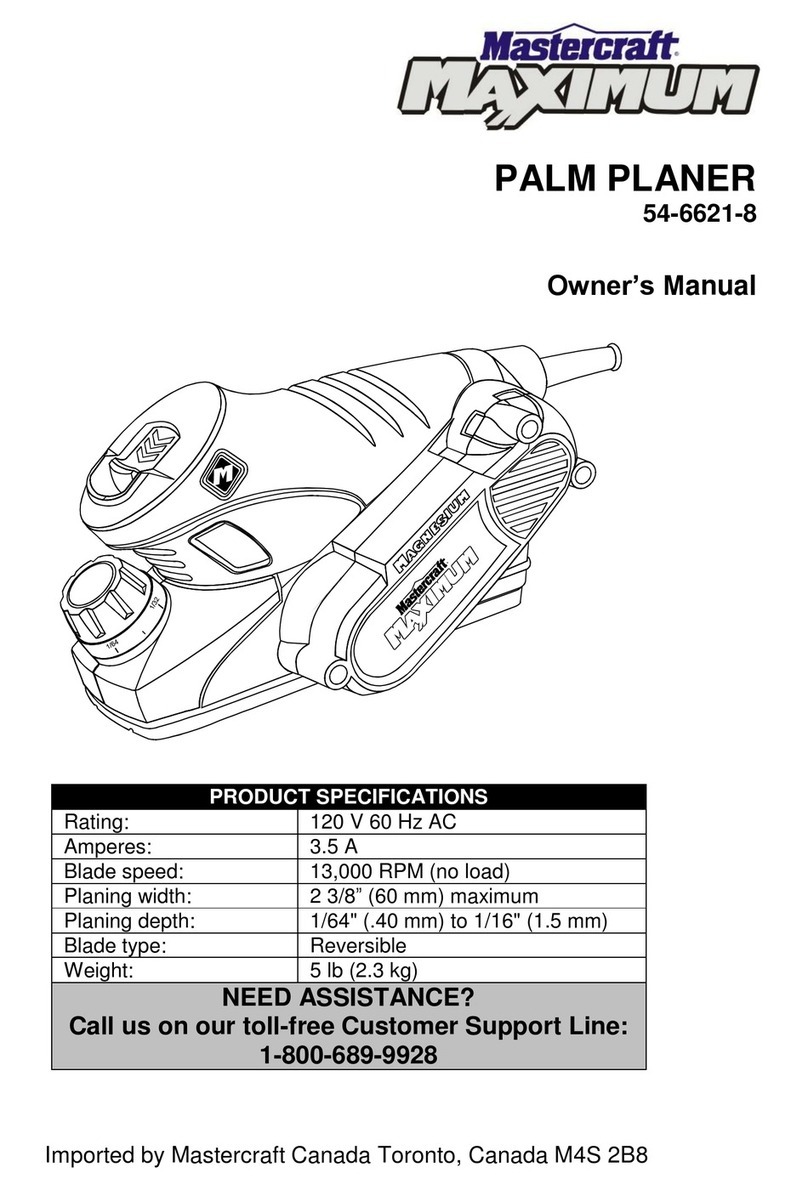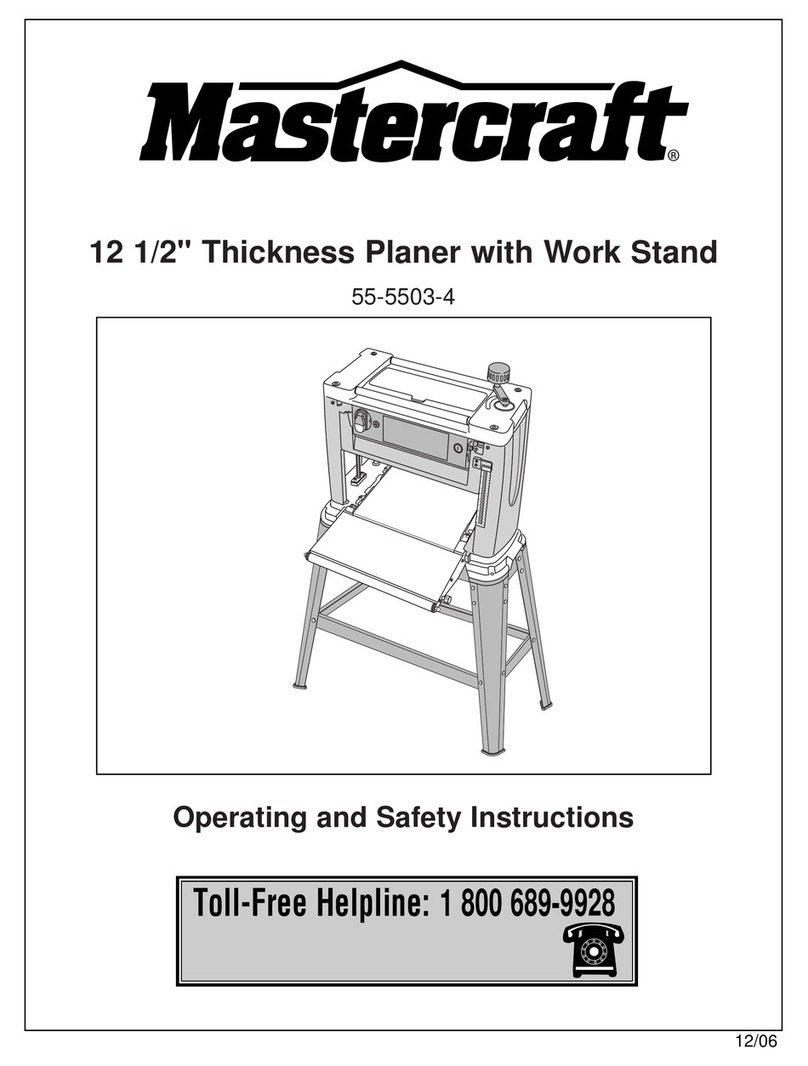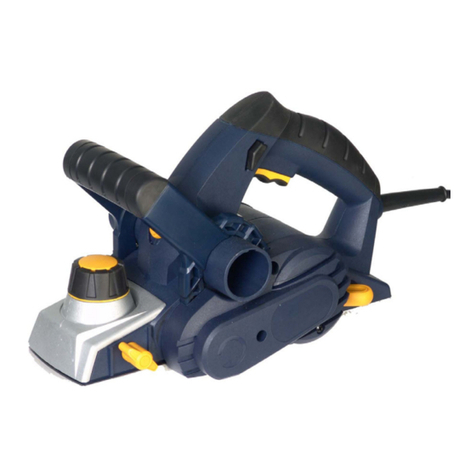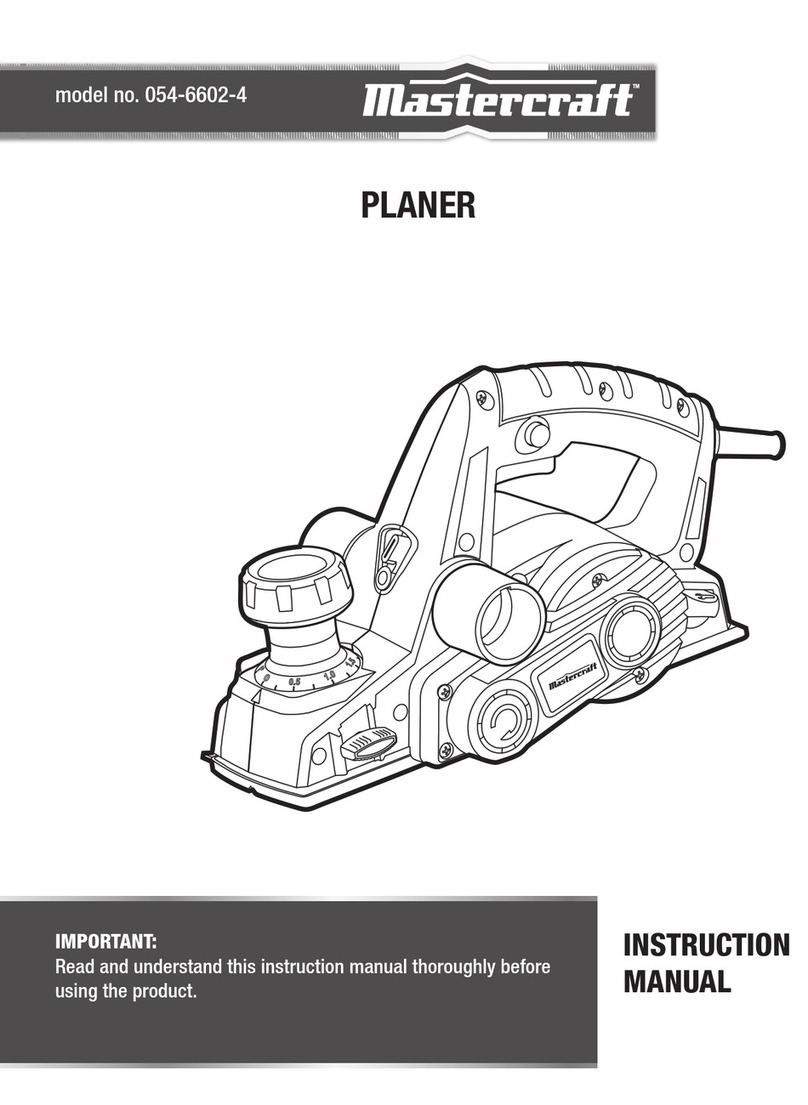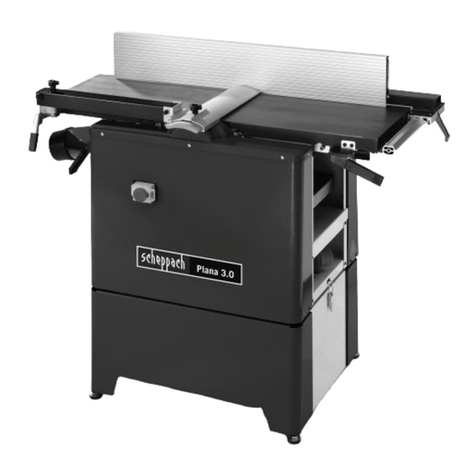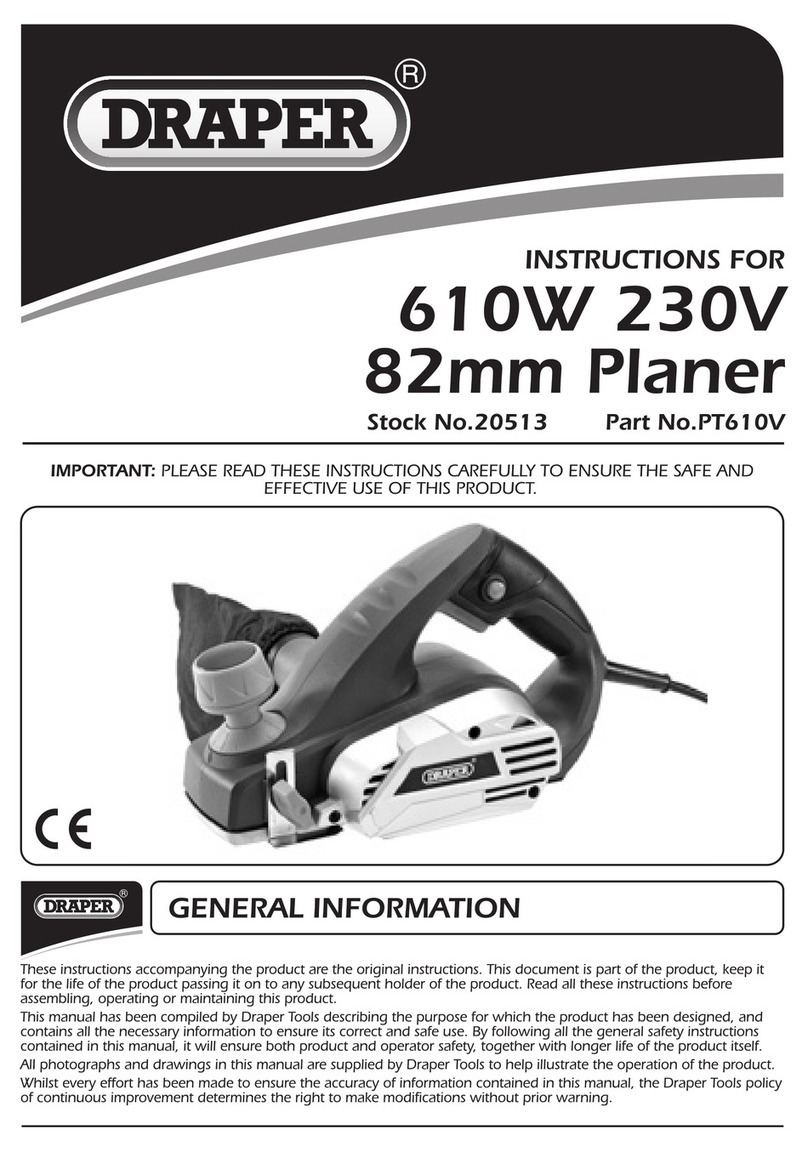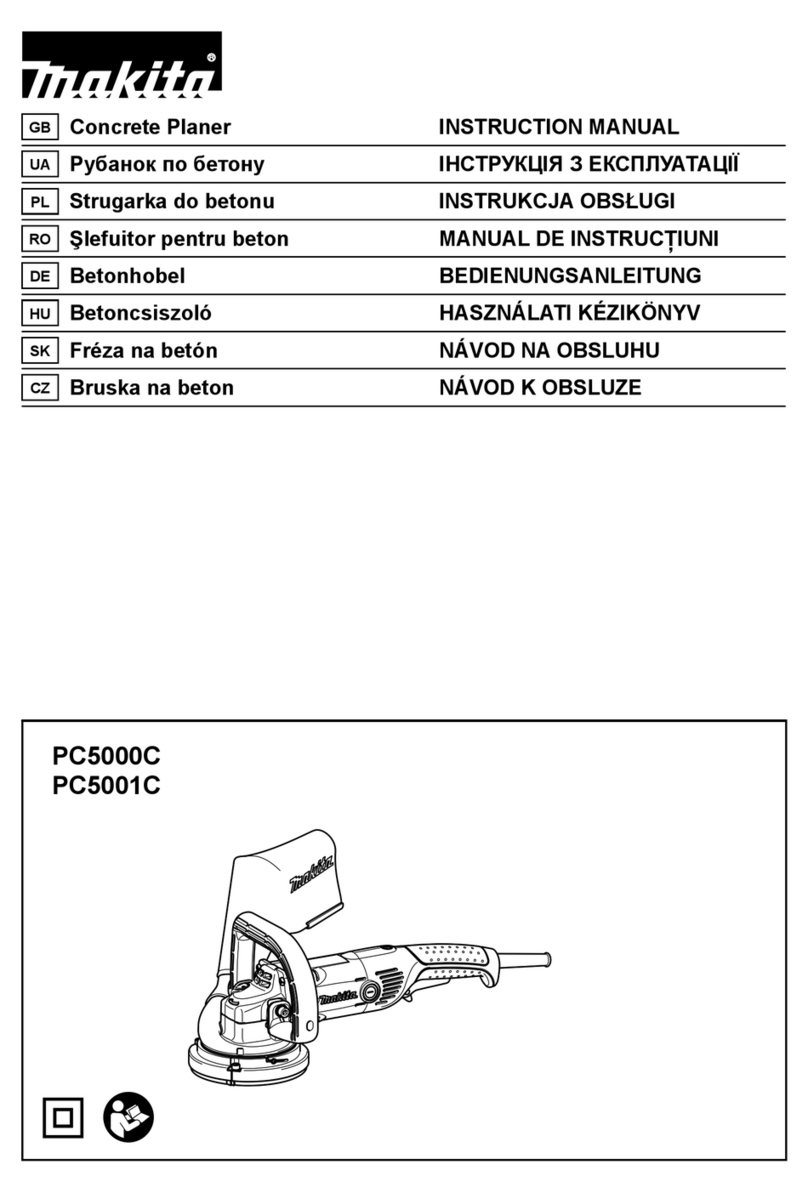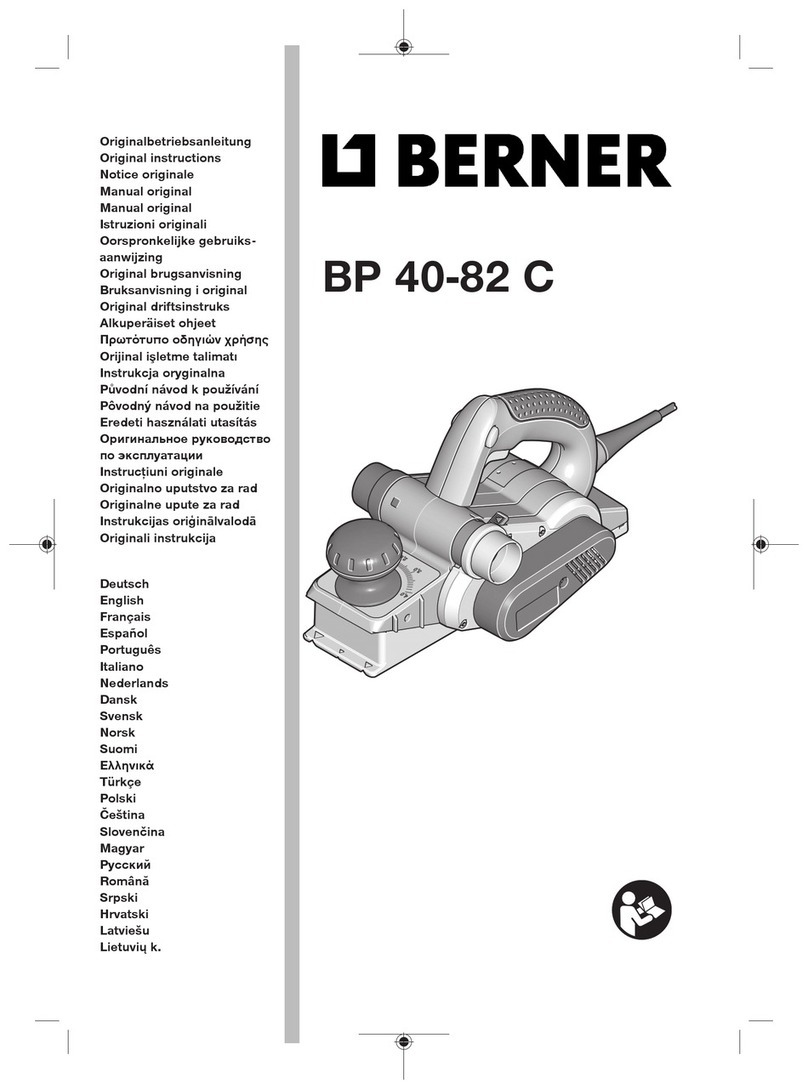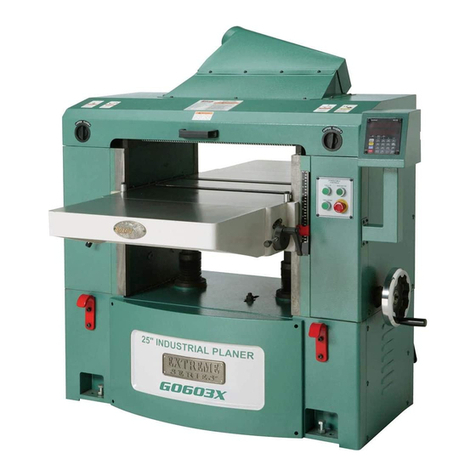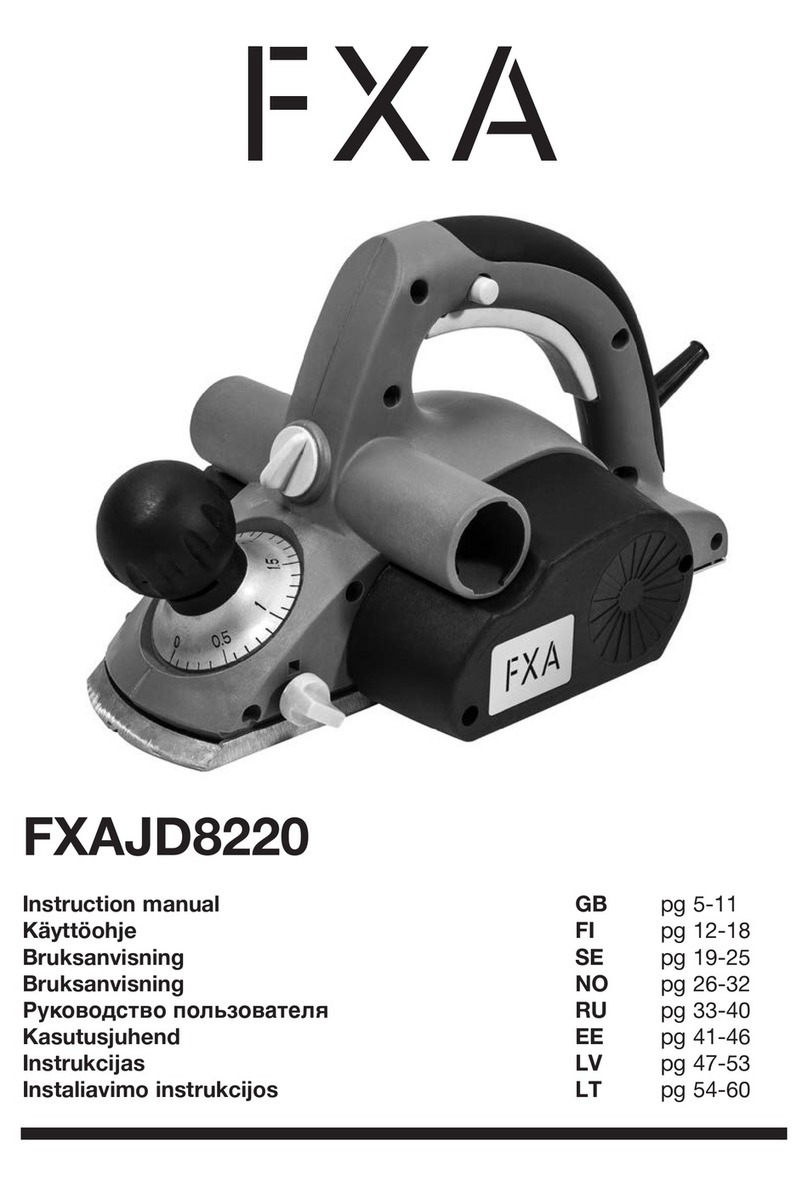BEFORE USING THE PLANER
1. Your planer comes completely assembled. The only assembly required is the cutterhead
depth adjustment handle. Mount your planer to a work bench or an adequate surface.
2. Learn to use the function of the ON/OFF switch, elevation handle, cutterhead guard, outfeed
table, infeed table and push blocks.
3. Review and understand all safety instructions and operating procedures in this instruction
manual.
4. Review the maintenance methods for this planer.
5. Find and read all the warning labels found on the planer:
• Read manual before using planer.
• Wear safety goggles.
• Never perform planing operation with cutterhead guard or belt guard removed.
• Never make planing cuts greater than 1/32" (0.8 mm).
• Never perform planing cuts on workpieces shorter than 14" (35.6 cm) in length.
• Turn power OFF, wait for blade to stop and remove power cord from power source before
adjusting or servicing.
WHEN INSTALLING OR MOVING THE PLANER
1. AVOID A DANGEROUS ENVIRONMENT:
• Use the planer in a dry, indoor place protected from rain.
• Keep work area well-lit.
2. TO AVOID INJURY FROM UNEXPECTED PLANER MOVEMENT:
• Bolt or clamp the planer to a firm level surface where there is plenty of room to move the
workpiece through the entire cut.
• Support the planer so the tables are level and the planer does not rock.
• Put the planer where operators or bystanders will not stand in line with the wood
while planing.
• To avoid injury from electrical shock, make sure your fingers do not touch the plug’s metal
prongs when plugging in or unplugging the planer.
• Turn OFF and unplug the planer before moving it to a new area. To avoid back injury,
get help when you need to lift the planer.
• Bolt the planer to the floor if it tends to move when planing long, heavy boards.
• DO NOT STAND ON THE PLANER. Do not store materials above or near it. Standing on
the tool to reach materials could result in serious injury if it tips or is accidentally contacted.
SAVE THESE SAFETY INSTRUCTIONS
WARNING: TO AVOID MISTAKES THAT COULD CAUSE SERIOUS, PERMANENT
INJURY, DO NOT PLUG IN THE PLANER UNTIL THE FOLLOWING STEPS HAVE BEEN
READ AND UNDERSTOOD.
III. Specific safety instructions for the planer
5
